

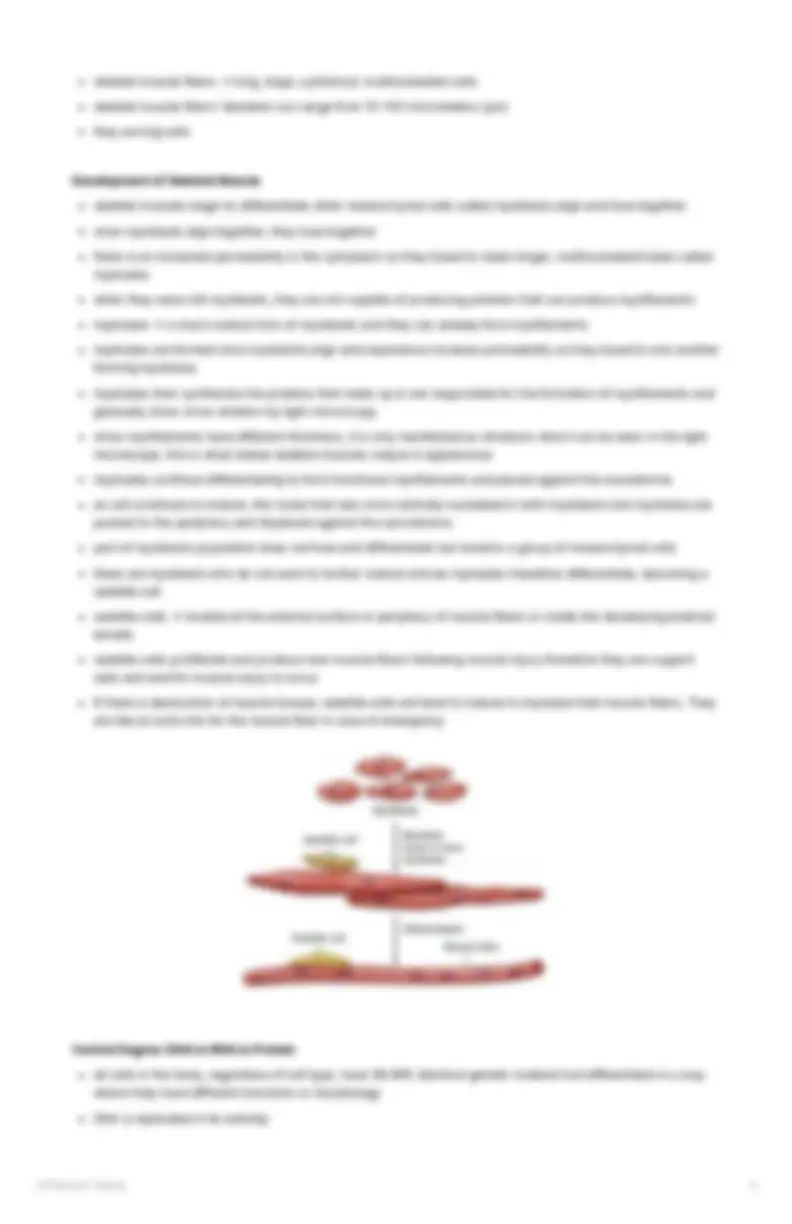
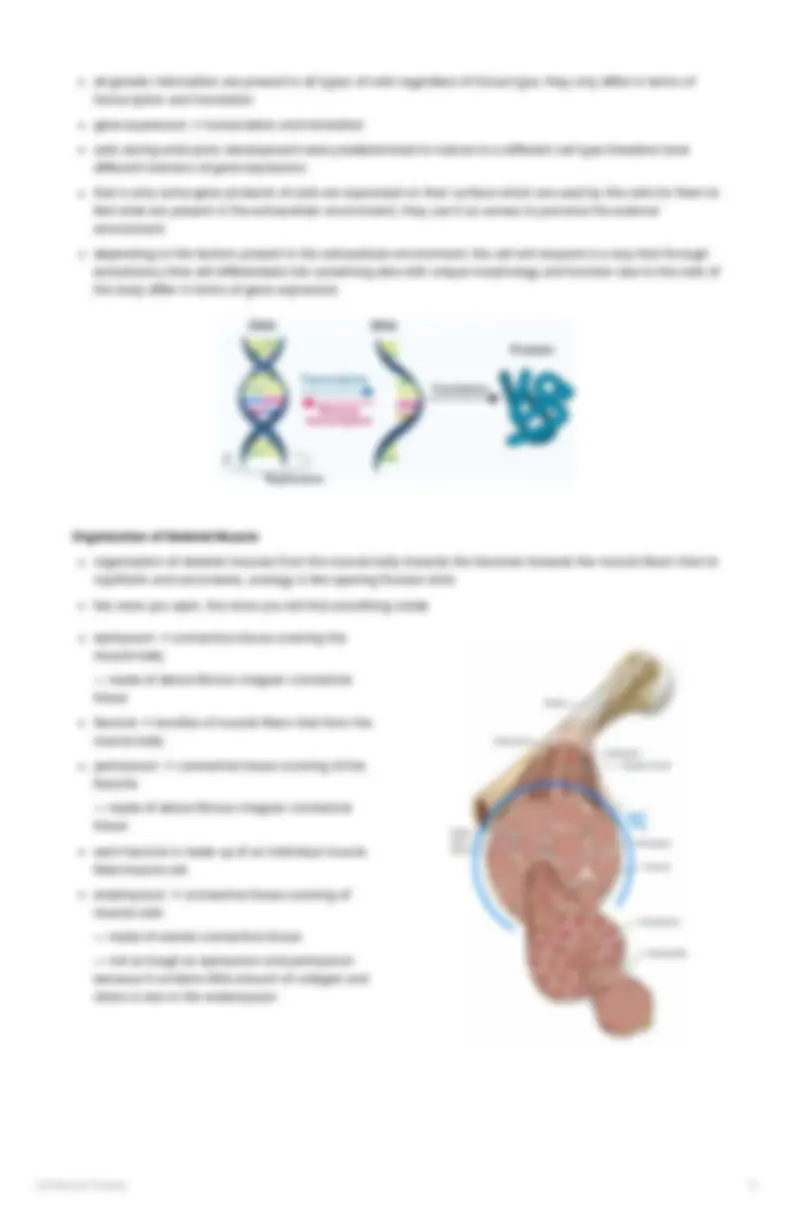
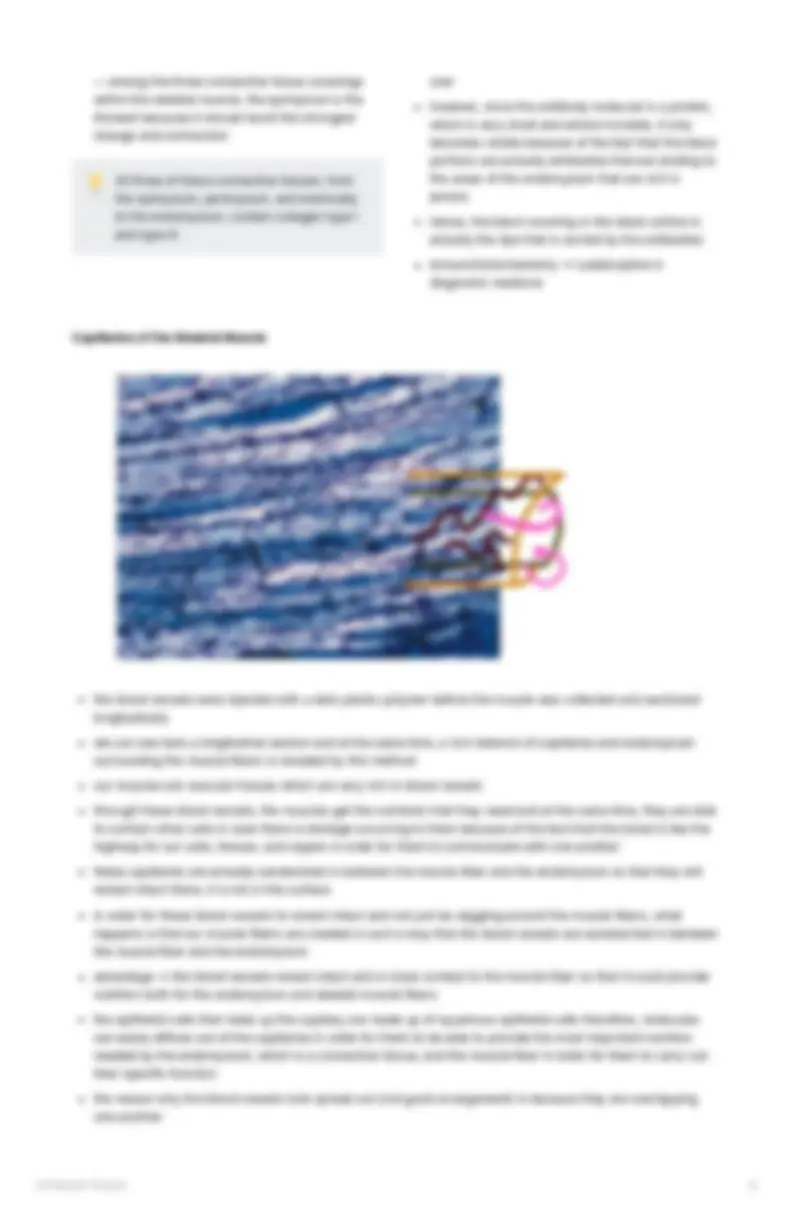
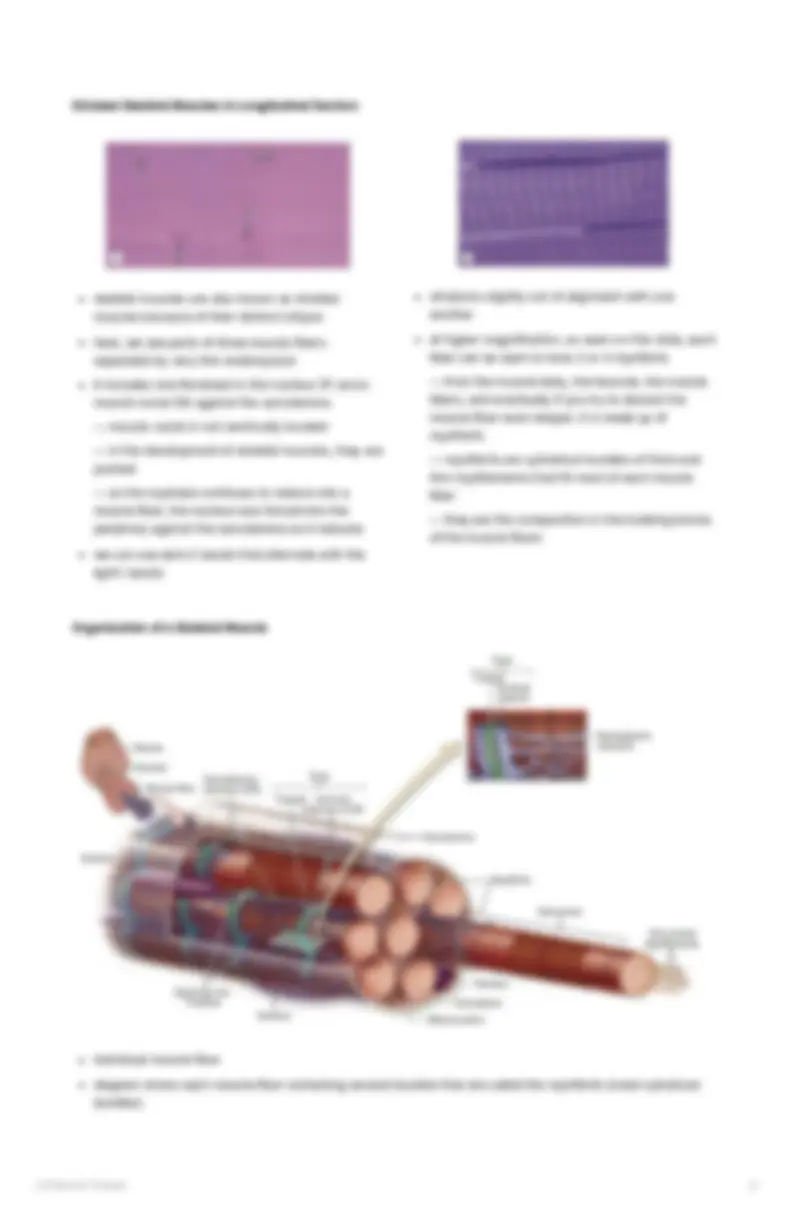
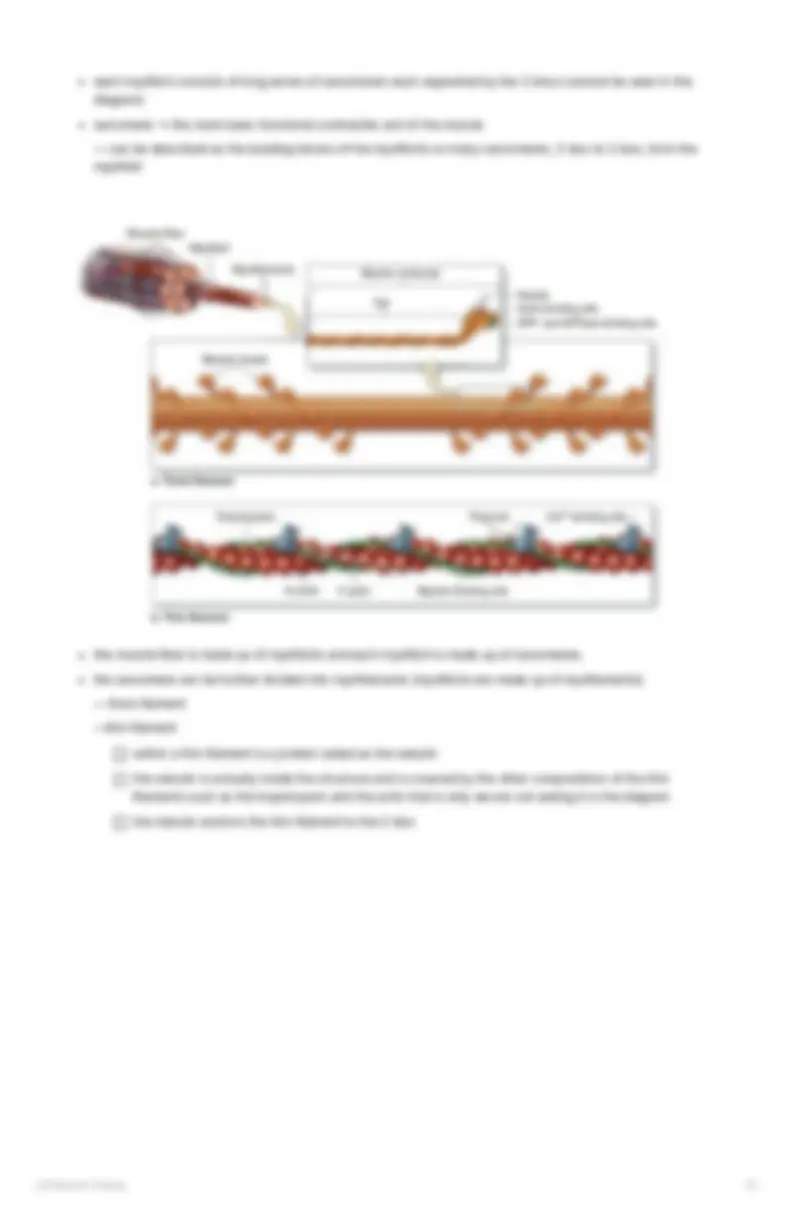
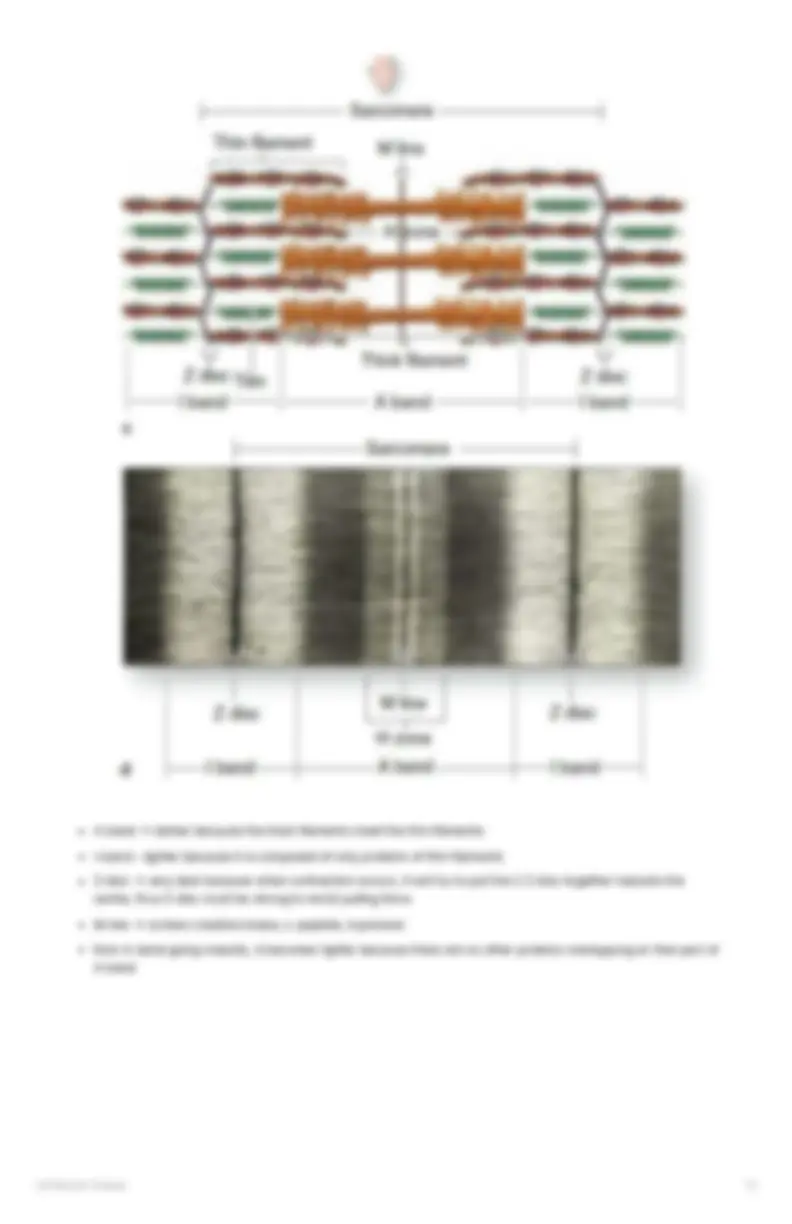
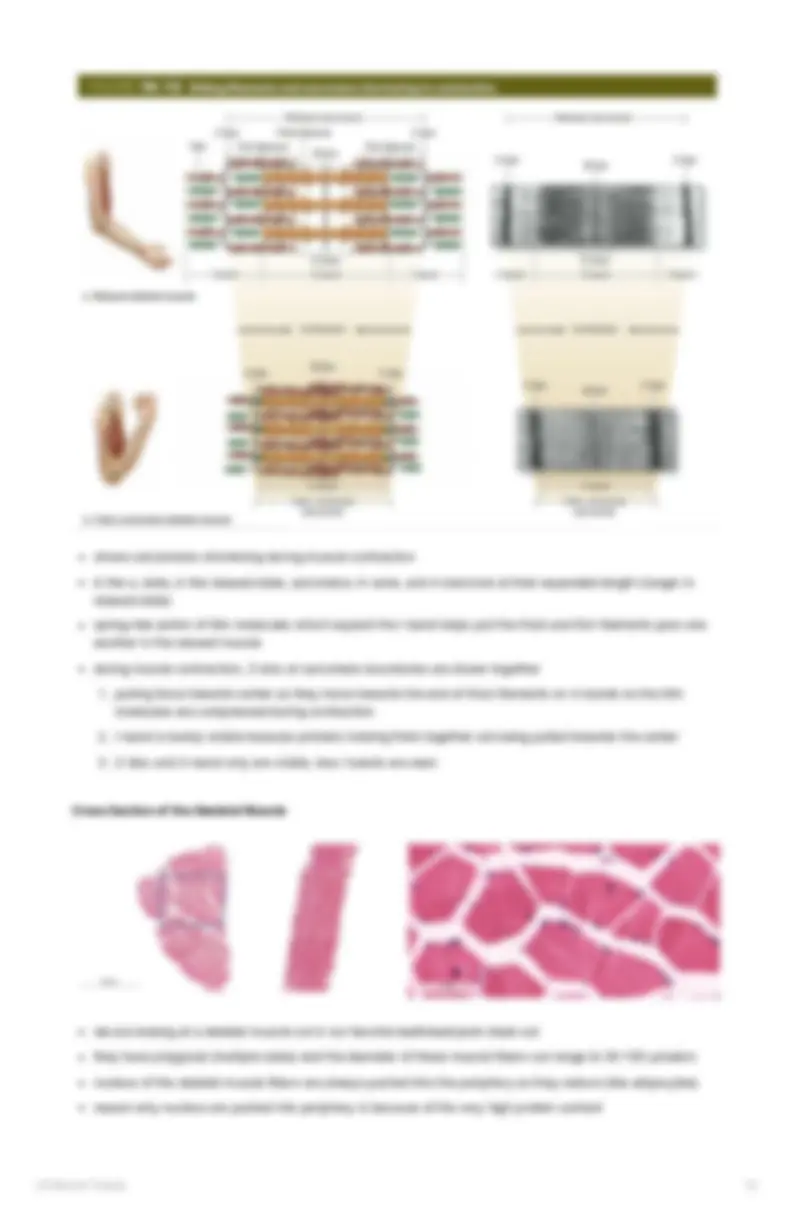
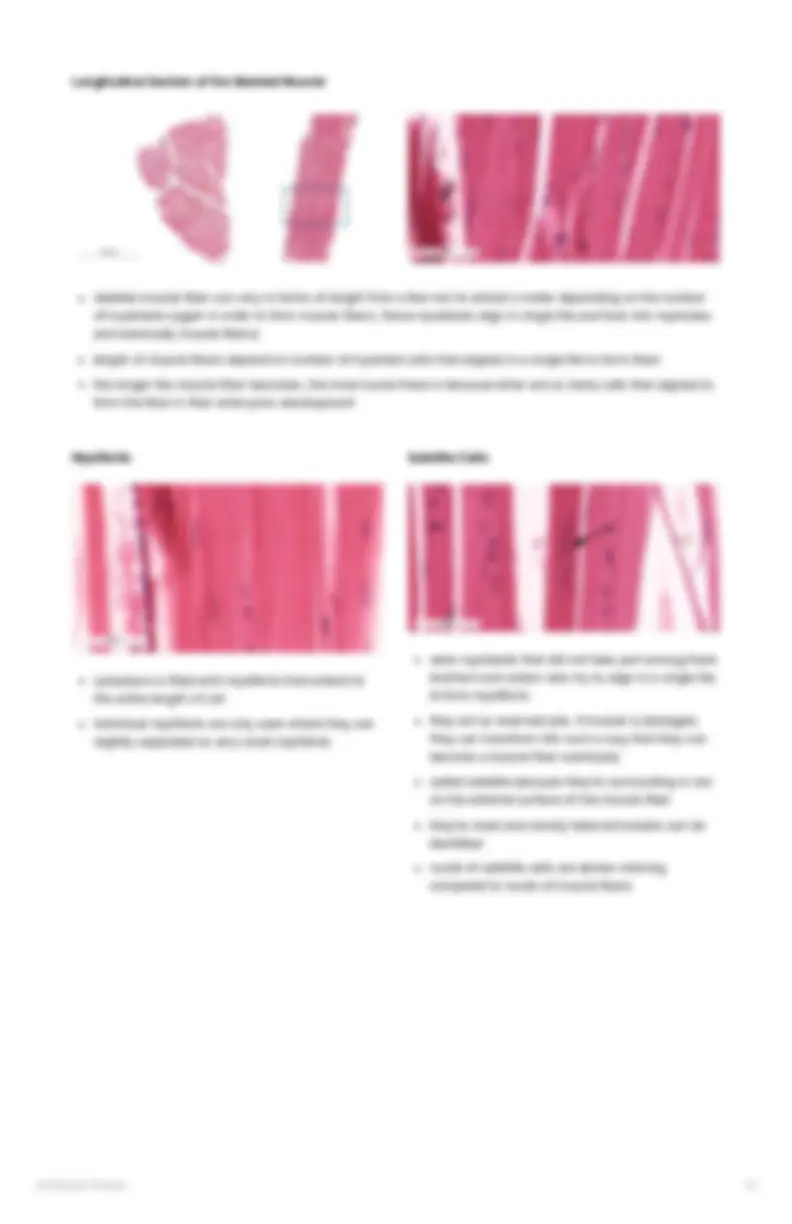
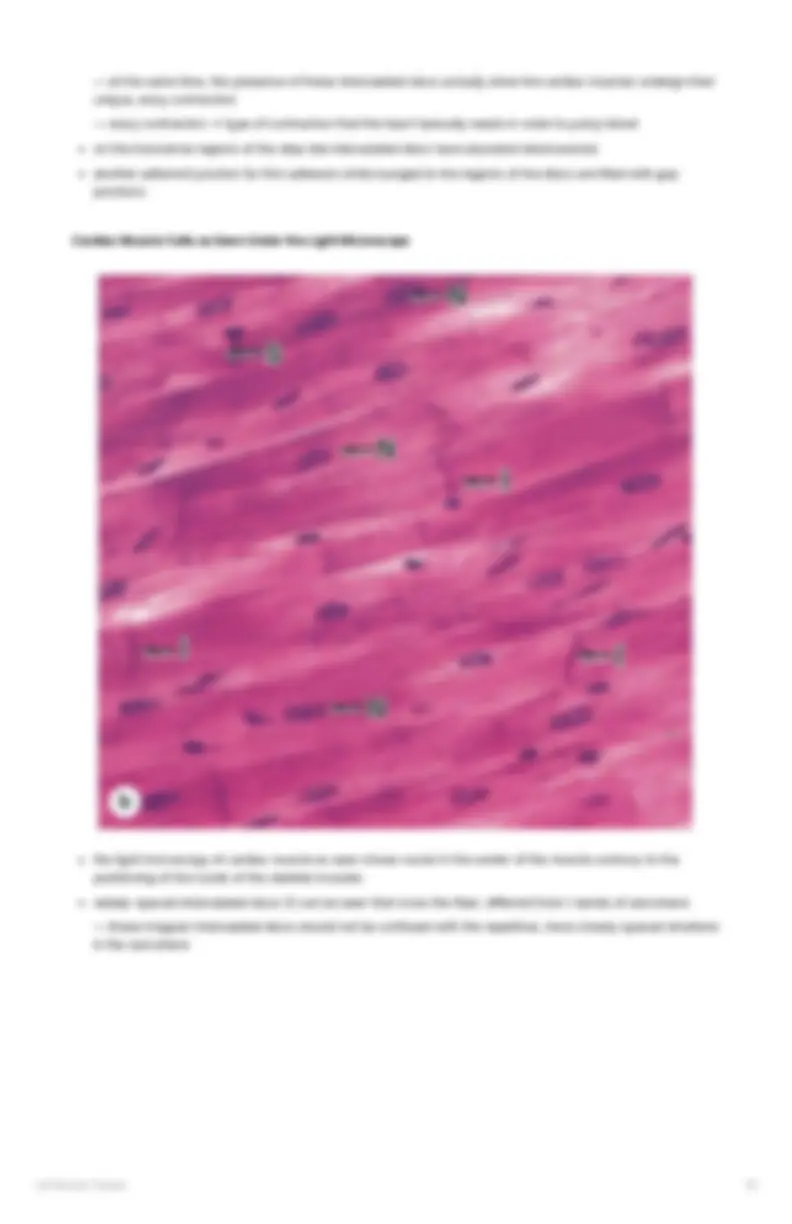
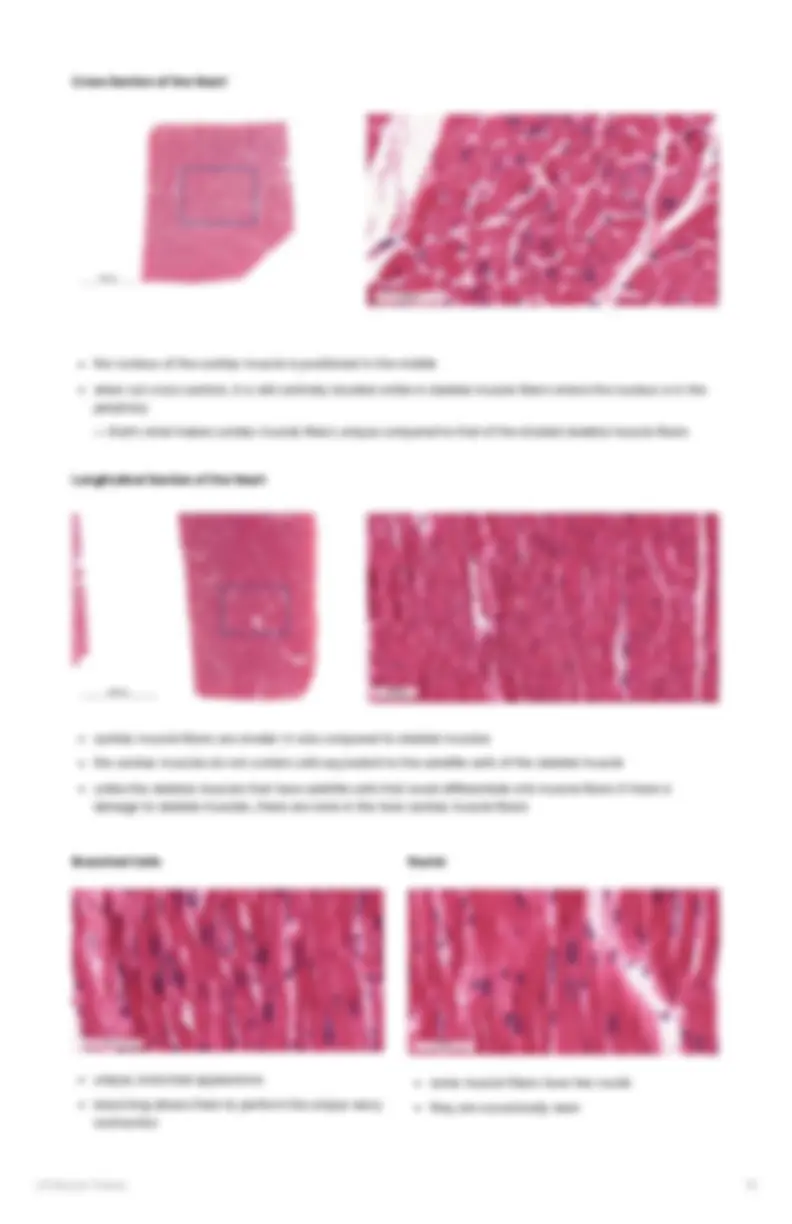
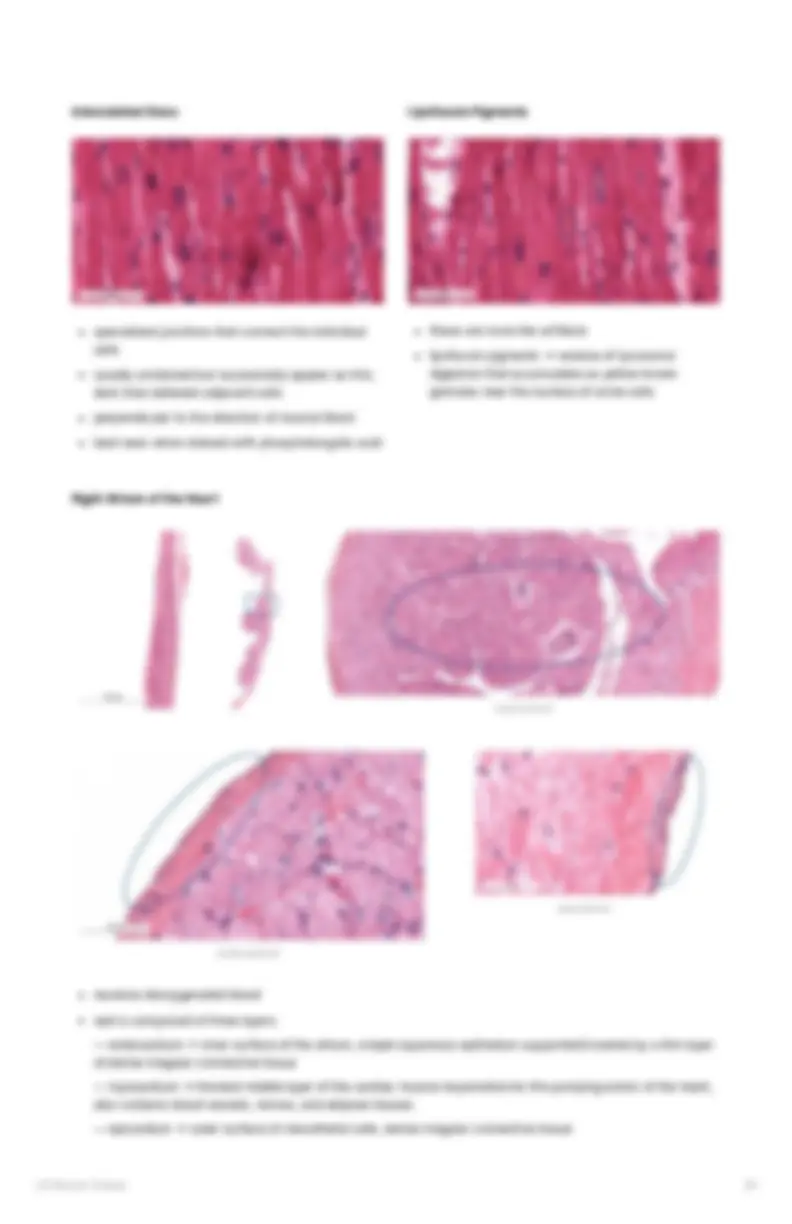
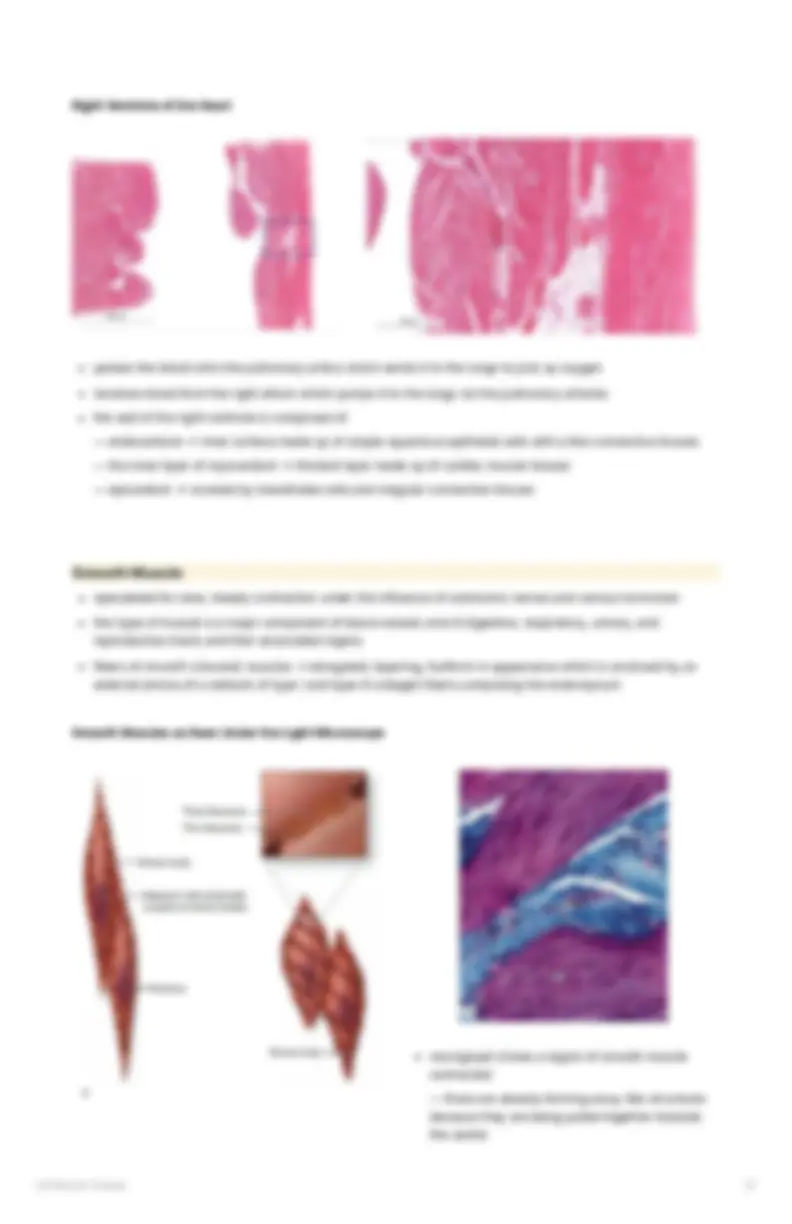
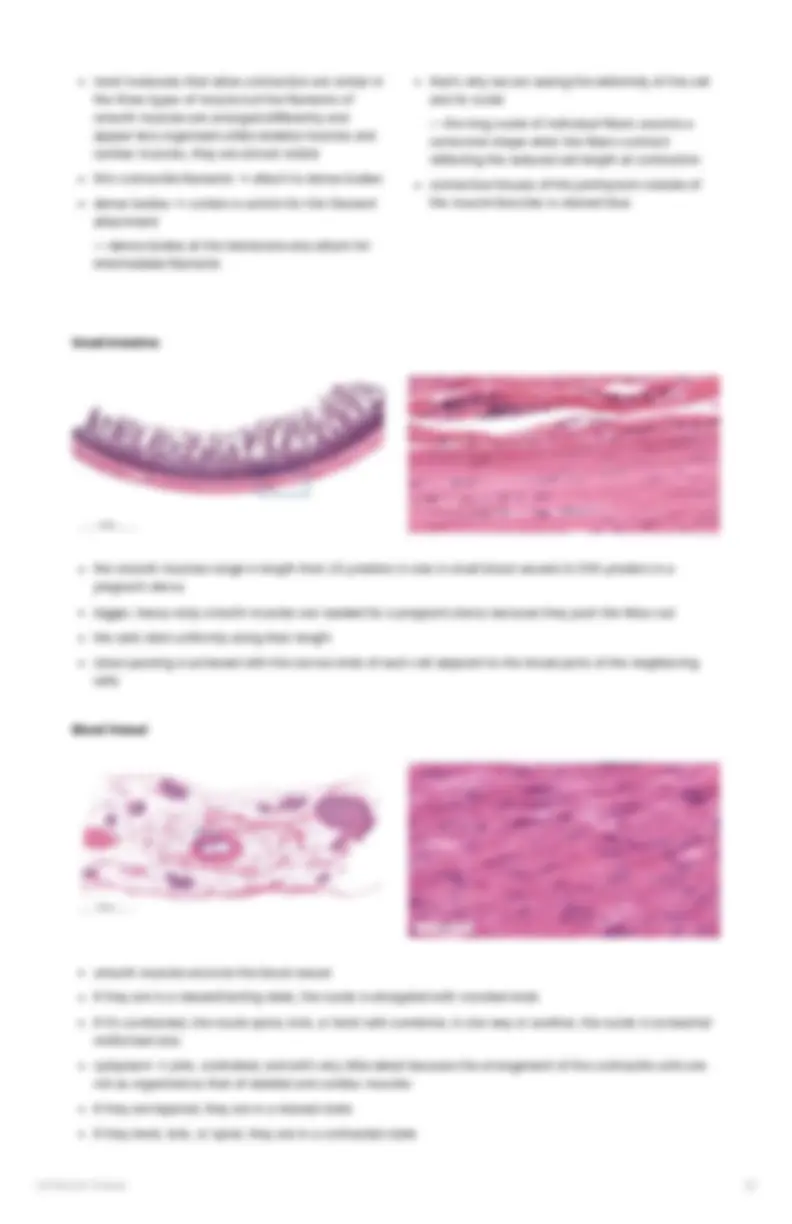


Study with the several resources on Docsity

Earn points by helping other students or get them with a premium plan


Prepare for your exams
Study with the several resources on Docsity

Earn points to download
Earn points by helping other students or get them with a premium plan
Community
Ask the community for help and clear up your study doubts
Discover the best universities in your country according to Docsity users
Free resources
Download our free guides on studying techniques, anxiety management strategies, and thesis advice from Docsity tutors
Description of Muscle Tissues, types, and parts
Typology: Study notes
Uploaded on 04/23/2021
1 document
1 / 22

This page cannot be seen from the preview
Don't miss anything!















CLASS MODE Laboratory
Completed SLIDES MUSCLE TISSUES HISTO LAB ԻSTUDENT COPYԼ.pdf
TOPIC Muscular Tissues
WEEK WEEK 13
condition is known as Necrotizing Fasciitis
insisted larva of parasitic roundworm that is called Trichinella spiralis
Muscular Dystrophy
a group of inherited diseases that damage or weaken the muscles over time this damage and weakness is due to the lack of a protein called dystrophin, which is necessary for normal muscle function the absence of this protein can cause problems with walking and swallowing
Acute Myocardial Infarction
fancy term to describe heart attack
Picture of a Patient's Arm that was Infected by Flesh-Eating Bacteria
Parasitic Infection of Infectious Skeletal Muscle
Key Characteristics of Muscles
Ԙո Excitable eg. a motor neuron releases neurotransmitters to a muscle cell an example of a neurotransmitter is acetylcholine tip of motor neuron is releasing neurotransmitters once acetylcholine is taken up by the muscle cell, a change in membrane potential occurs excitability implies that muscle fibers respond to some sort of stimulus, such as for this case, the stimulus is acetylcholine
change in membrane potential develops into an action potential at this point the action potential can be propagated along the actual muscle cell membrane which stimulates the muscle fiber to shorten forcibly eg. acetylcholine has already been diffused into the muscle cell, now it is taken up by that muscle cell as a signal for it to contract
muscles have the ability to be stretched beyond normal stretching length to facilitate the needs for locomotion it is the ability of the muscle to stretch the bone is surrounded by the muscle belly muscle belly, at the same time, is connected to the bone by the tendon
elasticity means that muscles resist the opportunity to be stretched opposite of extensibility muscles always want to recoil if the muscles are stretched due to demand of locomotion, it has a natural tendency to counteract or resist the stretching
Major Functions of the Muscles
Ԙո Production of Movement muscles are responsible for moving our skeletons ԙո Maintains Posture since gravity is pulling our body down, muscles are needed around the skeletons to stabilize them and maintain an upright position Ԛո Stabilize Joints muscles wrap around joints to stabilize them ԛո Generation of Heat
skeletal muscle fibers → long, large, cylindrical, multinucleated cells skeletal muscle fibers’ diameter can range from 10Ք100 micrometers (μm) they are big cells
Development of Skeletal Muscle
skeletal muscles begin to differentiate when mesenchymal cells called myoblasts align and fuse together once myoblasts align together, they fuse together there is an increased permeability in the cytoplasm so they fused to make longer, multinucleated tubes called myotubes when they were still myoblasts, they are not capable of producing proteins that can produce myofilaments myotubes → a much mature form of myoblasts and they can already form myofilaments myotubes are formed once myoblasts align and experience increase permeability so they fused to one another forming myotubes myotubes then synthesize the proteins that make up or are responsible for the formation of myofilaments and gradually show cross striation by light microscopy since myofilaments have different thickness, it is only manifested as striations which can be seen in the light microscope, this is what makes skeletal muscles unique in appearance myotubes continue differentiating to form functional myofilaments and placed against the sarcolemma as cell continues to mature, the nuclei that was once centrally nucleated in both myoblasts and myotubes are pushed to the periphery and displaced against the sarcolemma part of myoblasts population does not fuse and differentiate but remains a group of mesenchymal cells there are myoblasts who do not want to further mature and be myotubes therefore differentiate, becoming a satellite cell satellite cells → located at the external surface or periphery of muscle fibers or inside the developing external lamella satellite cells proliferate and produce new muscle fibers following muscle injury therefore they are support cells and wait for muscle injury to occur if there is destruction of muscle tissues, satellite cells will tend to mature to myotube then muscle fibers. They are like an extra tire for the muscle fiber in case of emergency
Central Dogma: DNA to RNA to Protein
all cells in the body, regardless of cell type, have 99.99% identical genetic material but differentiate in a way where they have different functions or morphology DNA is replicated in its entirety
all genetic information are present in all types of cells regardless of tissue type, they only differ in terms of transcription and translation gene expression → transcription and translation cells during embryonic development were predetermined to mature to a different cell type therefore have different manners of gene expression that is why some gene products of cells are expressed on their surface which are used by the cells for them to feel what are present in the extracellular environment, they use it as senses to perceive the external environment depending on the factors present in the extracellular environment, the cell will respond in a way that through evolutionary time will differentiate into something else with unique morphology and function due to the cells of the body differ in terms of gene expression
Organization of Skeletal Muscle
organization of skeletal muscles from the muscle belly towards the fascicles towards the muscle fibers then to myofibrils and sarcomeres, analogy is like opening Russian dolls the more you open, the more you will find something inside
epimysium → connective tissue covering the muscle belly — made of dense fibrous irregular connective tissue fascicle → bundles of muscle fibers that form the muscle belly perimysium → connective tissue covering of the fascicle — made of dense fibrous irregular connective tissue each fascicle is made up of an individual muscle fiber/muscle cell endomysium → connective tissue covering of muscle cells — made of areolar connective tissue — not as tough as epimysium and perimysium because it contains little amount of collagen and stress is less in the endomysium
Origin and Insertion
muscles are responsible for movement eg. mandible (jaw bone) and zygomatic bone, masseter muscle — masseter muscle provides powerful elevation and protrusion of the mandible by originating from the zygomatic arch and inserting along the angle and lateral surface of the mandible — since the zygomatic bone remains immobile, it is labelled as the origin (bone that does not move; has no locomotion) — the mandible, on the other hand, is moving therefore we call it as the insertion (bone being moved by the muscles)
The Skeletal Muscle
for plate labelled A, we can see a cross section of striated muscle demonstrating all three layers of the connective tissue and cell nuclei — endomysium (En) → very thin because it is only surrounding muscle fibers — eventually, the muscle fibers will form a fasciculi, which is covered by the perimysium — perimysium ԻPԼ → perimysium is much thicker compared to the endomysium because it is covered by as fascicle, which is made up of a bundle of muscle fibers — eventually, the fascicles group together to form the muscle belly, which in turn is covered by a dense connective tissue called as the epimysium — epimysium ԻEԼ → so red because it will help resist the contraction, the changes, or the pressure that is occurring in the muscle fiber
for plate B, we can see an adjacent section immunohistochemically stained for laminin immunohistochemical stain uses an antibody molecule, which specifically stains the external lamellae of the muscle fiber surrounded by the endomysium how does this antibody work? — this antibody is labelled with a dye in order for us to visualize the endomysium — the reason why the picture in plate B, in terms of the endomysium being seen, is much clearer compared to plate A because these antibodies are like heat-seeking missiles — the antibodies being used has a certain affinity for a molecule that is present in the endomysium — this molecule is called as a laminin once the antibody molecule (labelled with a dye) binds to the laminin, they will bind to the laminin all
— among the three connective tissue coverings within the skeletal muscle, the epimysium is the thickest because it should resist the strongest change and contraction
All three of these connective tissues, from the epimysium, perimysium, and eventually to the endomysium, contain collagen type I and type III.
over however, since the antibody molecule is a protein, which is very small and almost invisible, it only becomes visible because of the fact that the black portions are actually antibodies that are binding to the areas of the endomysium that are rich in laminin hence, the black covering or the black outline is actually the dye that is carried by the antibodies immunohistochemistry → subdiscipline in diagnostic medicine
Capillaries of the Skeletal Muscle
the blood vessels were injected with a dark plastic polymer before the muscle was collected and sectioned longitudinally we can see here a longitudinal section and at the same time, a rich network of capillaries and endomysium surrounding the muscle fibers is revealed by this method our muscles are vascular tissues which are very rich in blood vessels through these blood vessels, the muscles get the nutrients that they need and at the same time, they are able to contact other cells in case there is damage occurring to them because of the fact that the blood is like the highway for our cells, tissues, and organs in order for them to communicate with one another these capillaries are actually sandwiched in between the muscle fiber and the endomysium so that they will remain intact there, it is not in the surface in order for these blood vessels to remain intact and not just be wiggling around the muscle fibers, what happens is that our muscle fibers are created in such a way that the blood vessels are sandwiched in between the muscle fiber and the endomysium advantage → the blood vessels remain intact and in close contact to the muscle fiber so that it could provide nutrition both for the endomysium and skeletal muscle fibers the epithelial cells that make up the capillary are made up of squamous epithelial cells therefore, molecules can easily diffuse out of the capillaries in order for them to be able to provide the most important nutrition needed by the endomysium, which is a connective tissue, and the muscle fiber in order for them to carry out their specific function the reason why the blood vessels look spread out (not good arrangement) is because they are overlapping one another
each myofibril consists of long series of sarcomeres each separated by the Z discs (cannot be seen in the diagram)
sarcomere → the most basic functional contractile unit of the muscle
— can be described as the building blocks of the myofibrils so many sarcomeres, Z disc to Z disc, form the myofibril
the muscle fiber is made up of myofibrils and each myofibril is made up of sarcomeres.
the sarcomere can be further divided into myofilaments (myofibrils are made up of myofilaments)
— thick filament
—thin filament
within a thin filament is a protein called as the nebulin the nebulin is actually inside the structure and is covered by the other compositions of the thin filaments such as the tropomyosin and the actin that is why we are not seeing it in the diagram the nebulin anchors the thin filament to the Z disc
sarcomere → the most basic functional and contractile unit of the muscle
Z disc to Z disc is the length of the sarcomere
the yellow structure is the thick filament
titin proteins → green coils in between the Z disc and the thick filament
— connects the thick filaments to the Z disc
— they tie the thick filaments to the M-line (middle)
— they can go all the way towards the M-line in order to hold the thick filament together
why is it called the M-line?
— the main component of the M line is one of the strongest proteins you can see within the sarcomere because it is in the middle, and it should be able to resist very high levels of contractile stress
myomesin → the protein that makes up the M-line
— we can see creatine kinase and c-peptide in M line
creatine kinase → very important diagnostic marker that is seen in skeletal muscle diseases
— should not be floating/seen on the plasma (blood) because it is a protein that acts as a part of the muscle
— if this is seen in bloodstream, there is destruction of muscle tissues
— enzyme that mobilize phosphate groups (mobilization of phosphate groups from molecule to molecule will enable us to transfer energy from one another)
A-band → from one end to the other end of the thick filament
— when we were looking at the light micrograph of skeletal muscle, we can see that stripes were much darker on A-band compared to I band because A-band from end to end is made up of thick filament
— called such because A stands for anisotropic meaning “dark band”
I-band → is much lighter than AՔBand
— called that way because I stands for isotropic
H-zone → the distance of 1 thin filament to other filaments
the much darker the area is on the electron microscope, the more compact or dense the molecules are to one another
A-band → darker because the thick filaments meet the thin filaments
I-band – lighter because it is composed of only proteins of thin filaments
Z-disc → very dark because when contraction occurs, it will try to pull the 2 Z-disc together towards the center, thus Z-disc must be strong to resist pulling force
M-line → contain creatine kinase, c-peptide, myomesin
from A-band going inwards, it becomes lighter because there are no other proteins overlapping on that part of A-band
shows sarcomeres shortening during muscle contraction in the a. slide, in the relaxed state, sarcomere, H-zone, and A-band are at their expanded length (longer in relaxed state) spring-like action of titin molecules which expand the I-band helps pull the thick and thin filaments pass one another in the relaxed muscle during muscle contraction, Z-disc at sarcomere boundaries are drawn together Ԙո pulling force towards center as they move towards the end of thick filaments on A-bands so the titin molecules are compressed during contraction ԙո I-band is barely visible because proteins holding them together are being pulled towards the center Ԛո Z-disc and A-band only are visible, less I-bands are seen
Cross Section of the Skeletal Muscle
we are looking at a skeletal muscle cut in our favorite beefsteak/pork steak cut they have polygonal (multiple sides) and the diameter of these muscle fibers can range to 50Ք100 μmeters nucleus of the skeletal muscle fibers are always pushed into the periphery as they mature (like adipocytes) reason why nucleus are pushed into periphery is because of the very high protein content
sandwiched between endomysium and muscle fiber very simple and small blood vessel and only contain single layer of simple squamous epithelium nutrients diffuse quickly within the capillaries shown in the arrow, a collapsed capillary containing flattened red blood cells present on left edge of center of muscle fibers one of the most important characteristics of RBCs are flexible and deformable because the lumen (hole) of some capillaries may have a lumen of almost the same diameter of RBCs Ի6Ք8 μmeters) if it is not flexible, they could be stuck inside the capillaries thus, they flatten in order to pass through capillaries
The Sarcomere Ի2nd TEM Specimen)
Capillary Blood Vessel
mature cardiac muscle cells are 15Ք30 μmeters in diameter with 85Ք120 μmeters in length similar to skeletal muscle fibers, there are also striations seen in cardiac muscles unlike skeletal muscles, however, each cardiac muscle usually only has one nucleus and is centrally-located the nucleus of cardiac muscles is unique compared to the skeletal muscle because it is located at the center and not at the periphery of the cell
Development of Cardiac Muscles
during embryonic development in striated skeletal muscles, the myoblasts were forming single-file and eventually become the myotubes with membranes already diffused — eventually, the myotubes further mature into super striated with multinucleated muscle fiber cells in the case of cardiac muscle, the mesenchymal cells around the primitive heart tube align into chain-like arrays — instead of forming single-files, they form something like chains so therefore, it is the reason why we don't see cardiac muscles as long, cylindrical fibers — their formation of lines, they were already branching during embryonic development — rather than fusing into multinucleated cells unlike the skeletal muscles, cardiac muscle cells form complex junctions between interdigitating processes — cells within one fiber often branch and join with one cell in adjacent fibers — since they don't totally fuse with one another, we are seeing the intercalated discs
Cardiac Muscle Tissue
the diagram indicates the characteristic features the fibers consist of separate cells in a series joined at interdigitating regions called the intercalated discs — you can see the intercalated discs because unlike skeletal muscles, cardiac muscle fibers do not completely fuse with one another
Cross Section of the Heart
the nucleus of the cardiac muscle is positioned in the middle when cut cross-section, it is still centrally-located unlike in skeletal muscle fibers where the nucleus is in the periphery — that's what makes cardiac muscle fibers unique compared to that of the striated skeletal muscle fibers
Longitudinal Section of the Heart
cardiac muscle fibers are smaller in size compared to skeletal muscles the cardiac muscles do not contain cells equivalent to the satellite cells of the skeletal muscle unlike the skeletal muscles that have satellite cells that could differentiate into muscle fibers if there is damage to skeletal muscles, there are none in the lives cardiac muscle fibers
Branched Cells
unique, branched appearance branching allows them to perform the unique wavy contraction
Nuclei
some muscle fibers have two nuclei they are occasionally seen
Intercalated Discs
specialized junctions that connect the individual cells usually unstained but occasionally appear as thin, dark lines between adjacent cells perpendicular to the direction of muscle fibers best seen when stained with phosphotungstic acid
Lipofucsin Pigments
these are more like artifacts lipofucsin pigments → residue of lysosomal digestion that accumulates as yellow brown granules near the nucleus of some cells
Right Atrium of the Heart
receives deoxygenated blood wall is composed of three layers — endocardium → inner surface of the atrium, simple squamous epithelium supported/covered by a thin layer of dense irregular connective tissue — myocardium → thickest middle layer of the cardiac muscle responsible for the pumping action of the heart, also contains blood vessels, nerves, and adipose tissues — epicardium → outer surface of mesothelial cells, dense irregular connective tissue
myocardium
endocardium
epicardium
=